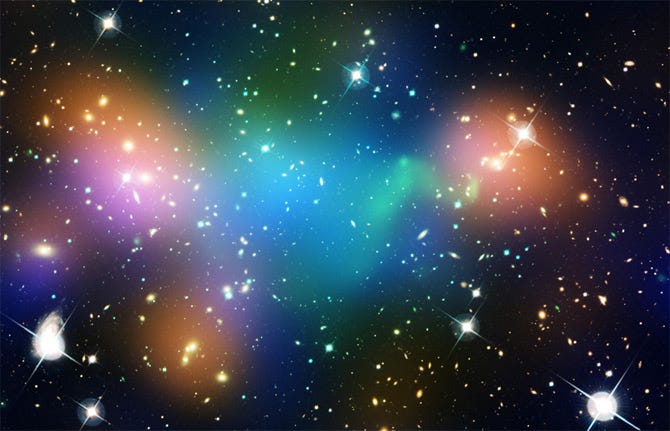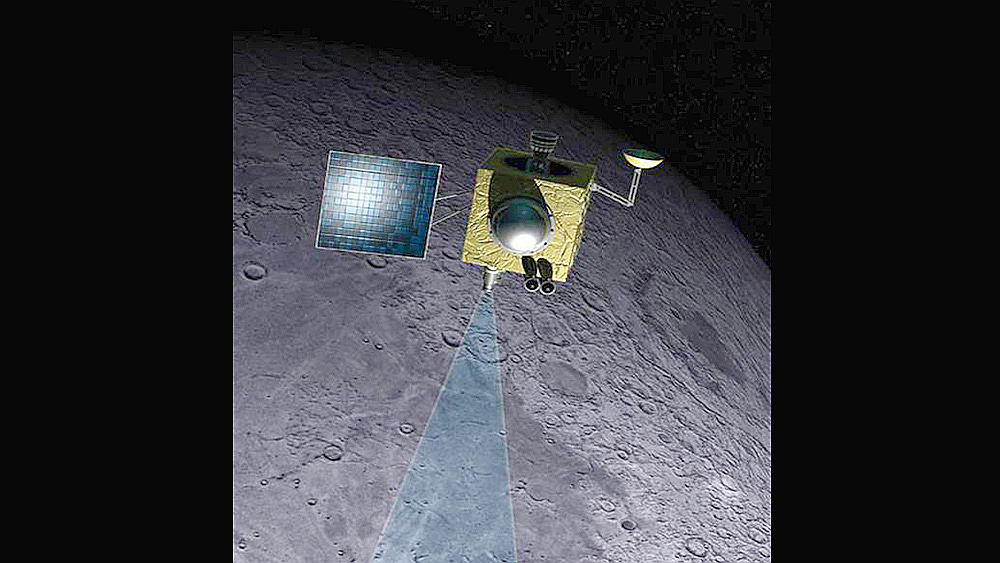The Cosmic Companion October 12, 2019
Astronomers find 20 new moons around Saturn, a plan to "hear" dark matter, and a new study of lunar ice reveals a big surprise.
Hello everyone!
Saturn is now king of the solar system when it comes to moons, as astronomers find 20 previously-unknown moons around the Ringed Planet. If we can’t see dark matter, researchers have a new plan to hear the elusive “something” that permeates space, and some deposits of ice on the lunar surface are too young to be the result of comet impacts - so how did it get there?
I’m also excited to report that The Cosmic Companion was just named one of the top three newsletters to read this week by Substack!
Let’s take off!
The Week in Space
20 More Moons Found Around Saturn
With the discovery of 20 more moons, Saturn now holds the record for the greatest number of moons anywhere in the Solar System, and you can help name them!

The orbits of the 20 newly-discovered moons of Saturn are shown here. Image credit: NASA/JPL-Caltech/Space Science Institute. Starry background courtesy of Paolo Sartorio/Shutterstock
The discovery of 20 previously-unknown moons around Saturn brings the number of known moons orbiting that planet up to 82. This surpasses Jupiter, with 79 moons currently known to orbit that world. In an effort to name these worlds, the International Astronomical Union (IAU), which assigns official names to bodies in space, is asking the public to help them choose names for these newly-discovered worlds.
The newly-discovered moons each have diameters around five kilometers (three miles). Seventeen of the 20 newly-discovered Saturnian satellites orbit in a retrograde orbit (in the same direction that Saturn rotates). Three of the worlds revolve around Saturn in the more-common prograde direction. Two of those three moons take less than two years to complete one orbit of the ringed planet, while the third prograde body, as well as the retrograde moons (which orbit further from Saturn), take more than three years to complete one orbit. One of these retrograde moons is the most distant known satellite in Saturn’s system.
Read more: http://bit.ly/20-Moons-Saturn
Listening for the Sounds of Dark Matter
Dark matter makes up 85 percent of all the matter in the Universe, yet we cannot see it. But, could it be possible to hear this elusive “something?”

The presence of dark matter can be seen in this Hubble image of Abell 520, where a collision of two massive galaxy clusters left behind a well of dark matter. Image credit: NASA, ESA, CFHT, CXO, M.J. Jee (University of California, Davis), and A. Mahdavi (San Francisco State University).
The first clues to the existence of dark matter floating between galaxies came in the 1930’s, from observations of clusters of galaxies by astronomer Fritz Zwicky. These findings were followed up four decades later by groundbreaking astronomer Vera Rubin, when she, along with fellow astronomer Kent Ford, detected the effects of dark matter on the rotational rates of galaxies. Observations conducted at Kitt Peak National Observatory in Arizona provided this first evidence of dark matter within galaxies.
Without the presence of dark matter, galaxies would break apart, and would not form into long-lived clusters. Although we cannot see dark matter (it does not radiate light, heat, or any other form of electromagnetic waves), we can see the effects its mass has on the objects we see in space. Dark matter is now believed to make up 85 percent of all matter in the Universe, nearly seven times as much as every star, planet, and all the gas and dust we see around us.
Read more: http://bit.ly/Listening-Sounds-Dark-Matter
Lunar Ice: The Origin Story
Water ice near the south pole of the Moon is making that region of the lunar surface hot property. But how did the ice get there? The story is not as simple as you may think.

On India’s first-ever mission to the Moon, Chandrayaan-1, the Moon Mineralogy Mapper (M3) instrument, recorded the first definite signs of water ice on the surface of the Moon. Image credit: NASA/JPL
The Moon was once thought to be a dry, barren place, cold, airless, and devoid of water. However, several discoveries in the last decade have found evidence of water ice, sitting in eternal shadows within craters near the poles of the Moon.
The most popular view of the origin of this ice is that comets striking the Moon deposited the ice, which never melted in the eternal darkness deep within some polar craters. A new study from Brown University suggests that some of the ice found in these craters may be relatively new, potentially suggesting a fraction of the ice may have found its way into the craters by other means.
Read more: http://bit.ly/Lunar-Ice-Origin-Story

Coming soon: The First Woman on the Moon: The Past and Future History of Women in Space by James Maynard
Thanks for reading! If you want to keep up with the latest updates and news about astronomy and space exploration, visit www.thecosmiccompanion.com, join our Facebook page, and follow @TheCosmicCompanion on Instagram and @CompanionCosmic on Twitter.
Do you know someone else who would love this newsletter? Please share!
Astronomy - Don’t Leave Home Without It!
- James


